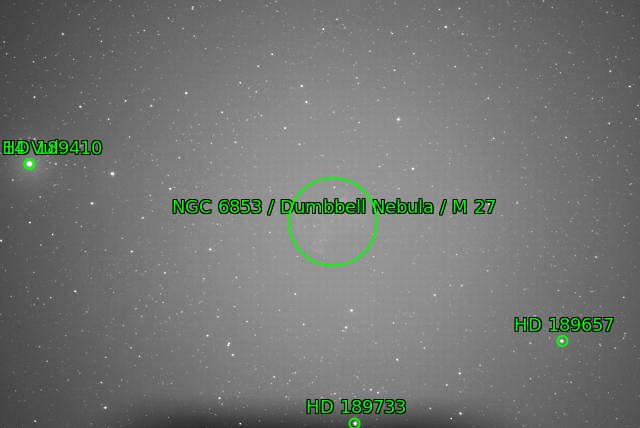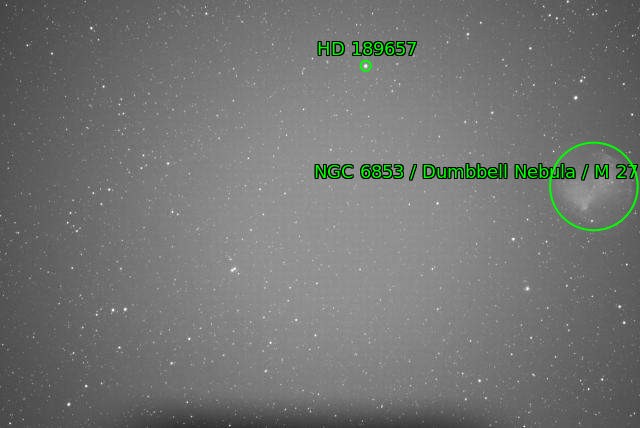Well, it has been cloudy here for days and I'm through processing the last clear nights subs, so I have some time on my hands. I'm also interested in this as I've also, just once, had this happen to me. I should have looked into it then but didn't.
So I'll try to make some conclusions from subs 03 and 04, before MF (meridian flip) and after MF.
There are 3 question:
- Did the MF actually happen?
- Did the AAP plate solve correctly after the MF?
- Why is M27 not centered?
1. Did the MF actually happen?
I ran both sub 03 and 04 through a online plate solver and the appended images are:
Sub 03

Sub 04

The star HD 189657 location does change in reference to the M27 and the image frame.
So Yes, the MF took place
2. Did the AAP plate solve correctly after the MF?
This is interesting. Sub 04 plate solve shows the image center as:
RA: 19h 59m 32.945s Dec:+22° 22' 13.348"
The actual location of M27 (in AAP database) is:
RA: 20h 0m 6s DEC+22° 46' 53"
Given that the pixel scale is 0.47 arcsec/pixel this means that M27 should be roughly 3000px left or right of center and around 70 pixels up/down. Which is what we see in the image.
The interesting thing is that this is where AAP believed the center to be.
In your log is shows that after MF the AAP believes the target is at:
RA: 20h0m22s DEC:+22°25'54"
and tried to plate solve to this RA/DEC and it succeeded within around 400 pixels.
In short, the plate solves after MF ended up at the location that AAP was looking for.
So also Yes, AAP plate solved to this location correctly. It got to the location where it thought the image was centered.
3. Why is M27 not centered?
So what we have here is AAP not knowing the correct image center. During MF it used an image center that was not correct. It didn't go the the wrong RA/DEC, it just didn't know that you had M27 in the image center.
Assuming that this is not a software bug in AAP then I can think of one way this may happen.
I GOTO M27, its not centered so I use plate solve and SYNC to update the AAP RA/DEC.
I then move the mount some way that AAP doesn't know about, maybe the mount hand controller to center M27 in the image. (Note that AAP is not aware that the image center has changed.)
I begin AutoRun.
MF happens and AAP GOTO and plate solve is going to go to the original RA/DEC, not the centered image location.
Does that all make sense?
Steve